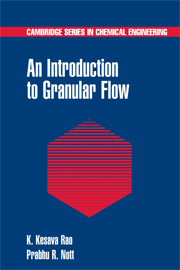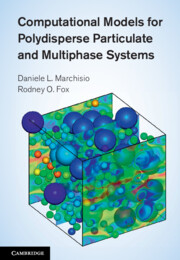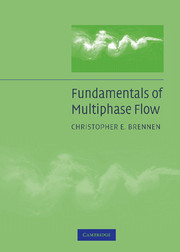An Introduction to Granular Flow
The flow of granular materials such as sand, snow, coal, and catalyst particles is common occurrence in natural and industrial settings. The mechanics of these materials is not well understood. They are important since a large fraction of the materials handled and processed in the chemical, metallurgical, pharmaceutical, and food processing industries are granular in nature. This book describes the theories for granular flow based mainly on continuum models although alternative discrete models are also discussed briefly. The level is appropriate for advanced undergraduates or beginning graduate students. The goal is to inform the reader about observed phenomena, some available models, and their shortcomings and to visit some issues that remain unresolved. There is a selection of problems at the end of the chapters to encourage exploration, and extensive references are provided.
- Discussion is based on continuum models with brief coverage of discrete models
- Includes a chapter on flow modeling
- Exercises included at the end of chapters
Reviews & endorsements
'This book gives a solid discussion of a broad range of topics related to granular flow, with much emphasis on theoretical modeling. The authors focus on continuum models, although there is some attention to discrete models as well. Overall, the book is well-written and provides a thorough overview of the current state of granular flow research.' Kimberly H. Henthorn, Chemical Engineering Education
'I commend the authors for providing a solid reference for those interested in granular flows. They do a nice job of summarizing peripheral topics while going into the appropriate detail in their focus areas.' Kimberly H. Henthorn, Chemical Engineering Education
Product details
April 2008Hardback
9780521571661
512 pages
260 × 182 × 33 mm
1.2kg
15 tables 98 exercises
Available
Table of Contents
- Preface. 1. Introduction
- 2. Theory for slow plane flow
- 3. Flow through hoppers
- 4. Flow through wedge-shaped bunkers
- 5. Theory for slow three-dimensional flow
- 6. Flow through axisymmetric hoppers and bunkers
- 7. Theory for rapid flow of smooth, inelastic particles
- 8. Analysis of rapid flow in simple geometries
- 9. Theory for rapid flow of rough, inelastic particles
- 10. Hybrid theories
- A. Operations with vectors and tensors
- B. The stress tensor
- C. Hyperbolic partial differential equations of first order
- D. Jump balances
- E. Discontinuous solutions of hyperbolic equations
- F. Proof of the coaxiality condition
- G. Material frame-indifference
- H. The evaluation of some integrals
- I. Linear stability
- J. Pseudoscalars, vectors, and tensors
- K. Answers to selected problems
- References.





